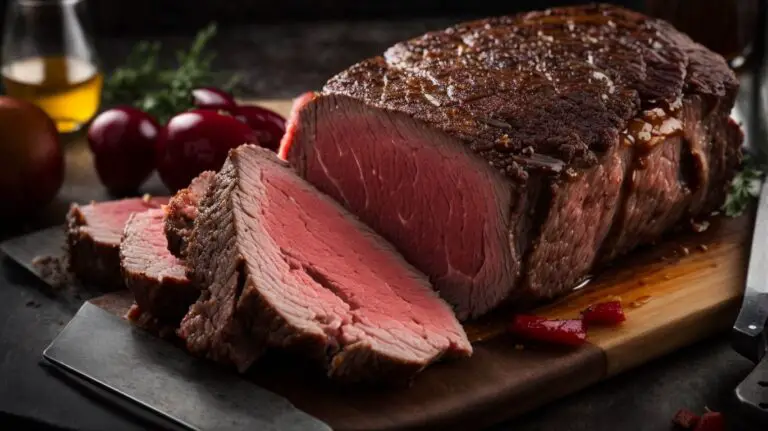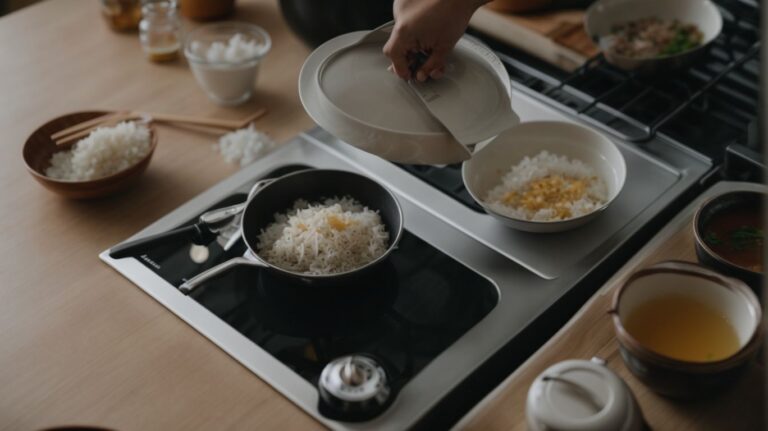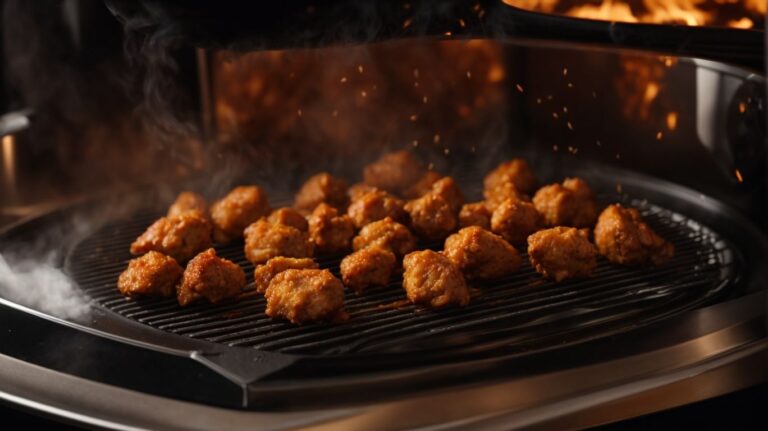How to Cook Japanese Rice?
Have you ever wondered what makes Japanese rice so different from other types of rice?
We will explore the various types of Japanese rice – short grain, medium grain, and long grain – and discuss how to choose the best one for your cooking needs.
Learn about the tools needed for cooking Japanese rice and the steps to cook it perfectly every time.
Discover some tips and tricks for achieving the perfect Japanese rice every time!
Key Takeaways:
What Makes Japanese Rice Different?
Japanese rice, known for its unique characteristics, stands out due to its sticky texture and high starch content, making it ideal for dishes like sushi and rice balls.
One of the key features that distinguish Japanese rice from other varieties is its texture, which is stickier when cooked, allowing it to hold together well in dishes that require molding or shaping. This stickiness is attributed to the higher amylopectin content in Japanese rice, giving it a soft and chewy consistency when prepared. This particular quality is highly valued in traditional Japanese cuisine, where rice is a staple food item and serves as the foundation for many meals.
Types of Japanese Rice
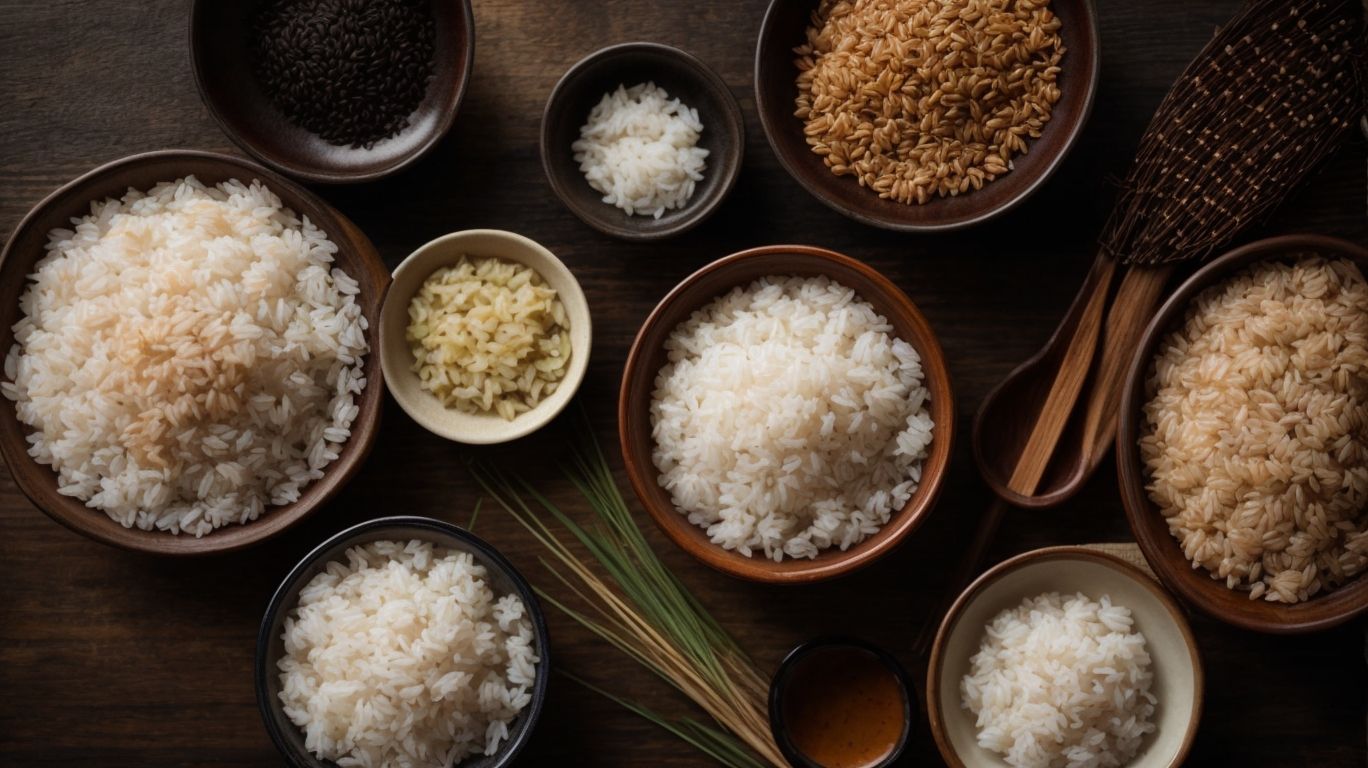
Credits: Poormet.Com – Ethan Gonzalez
Regarding Japanese rice, there are several types to choose from, with Koshihikari being one of the most popular short-grain varieties known for its sticky texture and high starch content.
Short Grain Rice
Short grain rice, a staple in Japanese cuisine, is prized for its sticky texture, glossy appearance, and tender bite, making it perfect for dishes like sushi and onigiri.
This type of rice has a higher starch content and more moisture than long-grain varieties, contributing to its signature stickiness when cooked.
Short grain rice has a remarkable ability to absorb flavors well, making it ideal for incorporating seasonings and ingredients in dishes such as risotto and paella.
Its plump grains release just the right amount of starch during cooking, adding a creamy texture to dishes and helping bind ingredients together.
Medium Grain Rice
Medium grain rice, another variety commonly used in Japanese cooking, offers a balance between the stickiness of short-grain rice and the fluffiness of long-grain rice, catering to a variety of dishes.
Its slightly shorter and wider grains absorb flavors well, making it ideal for dishes like sushi, rice bowls, and rice-based desserts. The texture of medium-grain rice is slightly creamy when cooked, giving dishes a pleasant mouthfeel. Due to its ability to stick together without becoming overly mushy, it is also used in dishes such as rice balls or onigiri, where shaping the rice is important.
Long Grain Rice
Long grain rice, though less commonly used in Japanese dishes, offers a fluffy and separate texture when cooked, making it suitable for certain recipes that require distinct grains.
One of the key characteristics of long-grain rice is its ability to maintain a firm yet delicate texture after cooking. Each grain retains its individual shape and integrity, adding a visually appealing look to the dish. Long-grain rice is known for being less sticky compared to medium or short-grain varieties, making it ideal for dishes like pilaf or stir-fry where the grains need to stay separate. Its elongated shape helps absorb flavors well, resulting in a subtly flavored dish. In Japanese cuisine, long-grain rice is a versatile option that can be used creatively to bring out unique flavors and textures.
How to Choose the Best Japanese Rice?
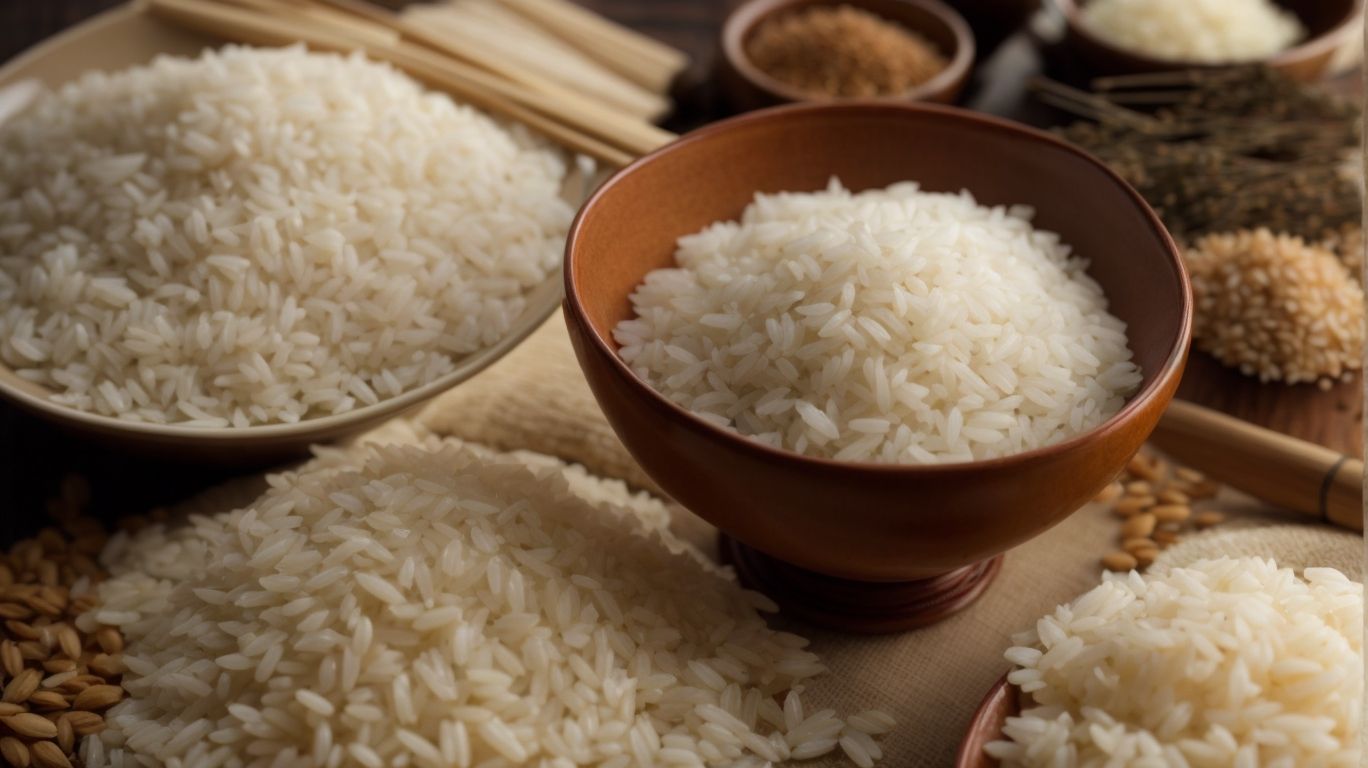
Credits: Poormet.Com – Nathan Anderson
Selecting the best Japanese rice involves considering factors such as the brand reputation and specific variety like Koshihikari, known for its superior quality and flavor profile.
When choosing Japanese rice, it is essential to look for established brands that have a reputation for producing high-quality rice grains. Brands like Tamanishiki, Nishiki, and Tamaki are well-known for their consistent quality and authenticity.
Within the realm of Japanese rice varieties, Koshihikari stands out due to its tender texture, sweet flavor, and ideal stickiness for sushi and other traditional Japanese dishes. This premium short-grain rice is cultivated in specific regions of Japan, such as Niigata and Toyama prefectures, where the climate and soil composition contribute to its exceptional taste and texture.
Tools Needed for Cooking Japanese Rice
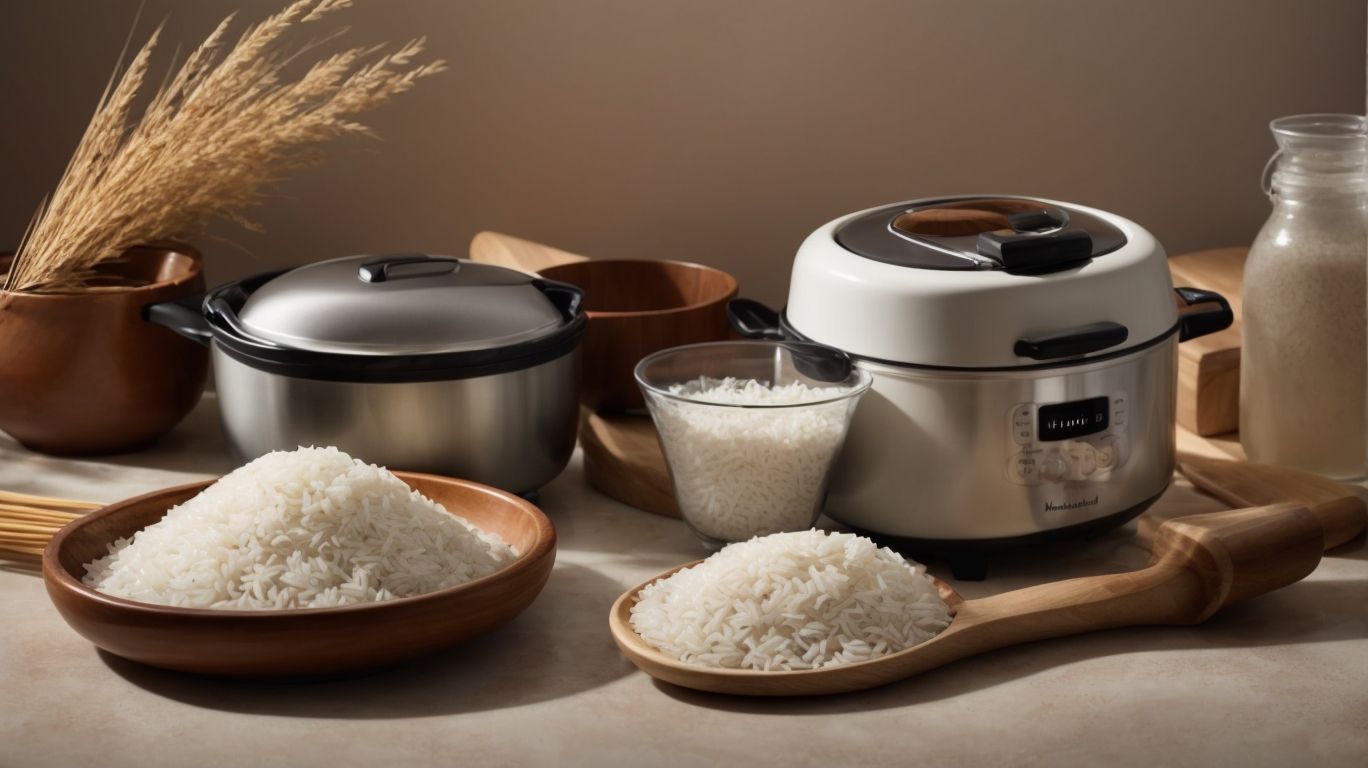
Credits: Poormet.Com – Joseph Rodriguez
To cook Japanese rice effectively, essential tools like a rice cooker for convenience or a pot with a well-fitting lid for traditional methods are required to achieve the perfect texture and consistency.
When using a rice cooker, the process becomes more automated and hassle-free, ensuring that your rice is cooked to perfection without constant monitoring. The rice cooker’s precise temperature control and timers make it an ideal choice for busy individuals or those who want consistent results every time.
Pots with well-fitting lids, on the other hand, are crucial for traditional stove-top cooking. The lid helps to trap steam within the pot, allowing the rice to cook evenly and absorb moisture uniformly, resulting in fluffy and flavorful rice.
Rice Cooker
A rice cooker is a convenient and efficient appliance widely used for cooking Japanese rice, ensuring consistent results and ease of preparation for various rice-based dishes.
The advantages of using a rice cooker extend beyond just cooking rice perfectly. These versatile appliances are equipped with specialized technology that precisely controls temperature and cooking time, resulting in fluffy rice with the ideal texture every time. Rice cookers often feature settings for different types of rice, such as sushi or jasmine rice, allowing for flexibility in meal preparation. Their user-friendly interfaces make them accessible for all skill levels, simplifying the cooking process and saving time in the kitchen.
Pot with a Lid
A pot with a well-fitting lid is a traditional yet effective tool for cooking Japanese rice, allowing for proper steam retention and controlled heat to achieve optimal results.
When cooking Japanese rice, the pot with a lid plays a crucial role in creating the ideal cooking environment. The lid traps the steam produced during cooking, ensuring that the rice cooks evenly and absorbs the right amount of moisture.
The lid helps to regulate the heat within the pot, preventing the rice from sticking to the bottom or burning. This gentle heat control is essential for achieving the desired fluffy and slightly sticky texture that is characteristic of well-cooked Japanese rice.
Steps to Cook Japanese Rice
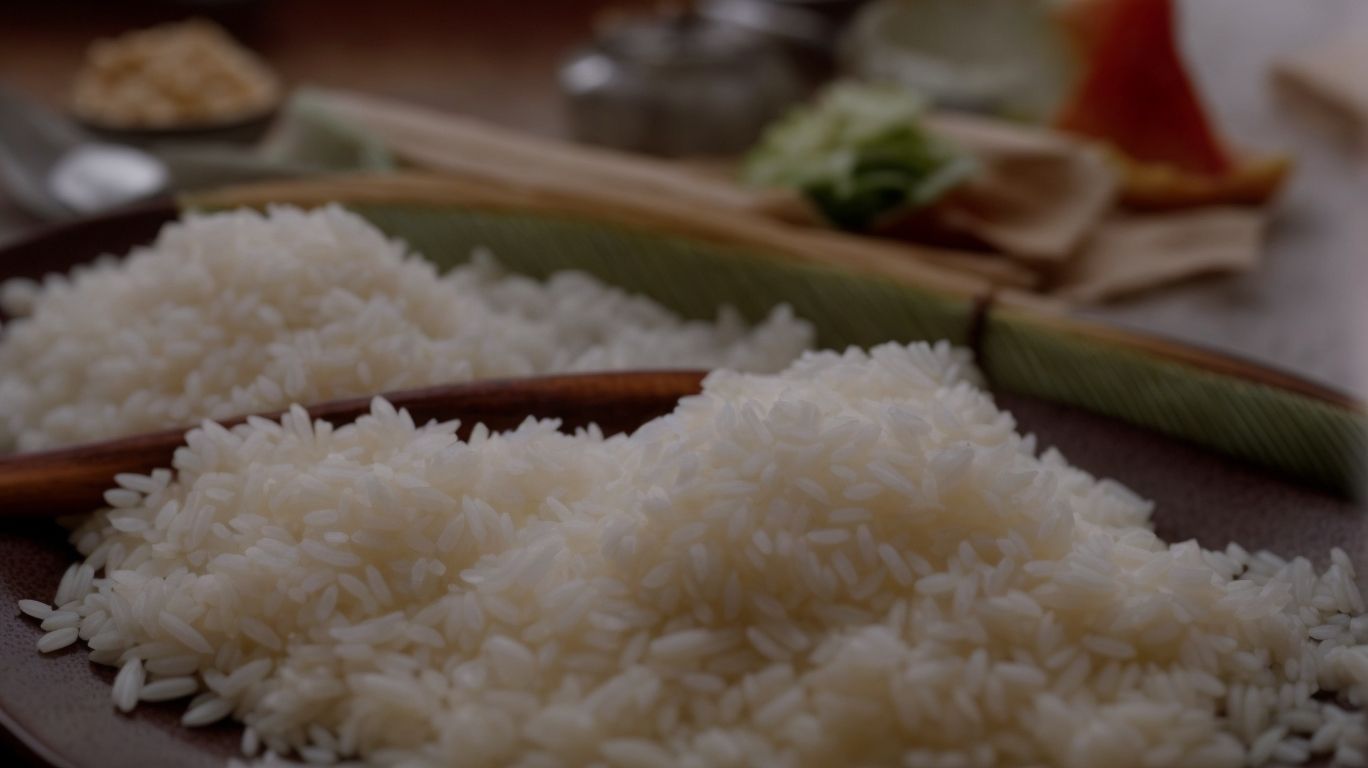
Credits: Poormet.Com – Gerald Johnson
Cooking Japanese rice involves essential steps like rinsing the rice, soaking it for proper water absorption, cooking it to perfection, and allowing it to steam for a fluffy texture.
Rinsing the rice is crucial to remove excess starch and impurities, which can result in a stickier texture. Once rinsed, the rice should be soaked in water for about 30 minutes to ensure even cooking and proper absorption of water.
After soaking, the rice is then cooked in a pot with the appropriate amount of water, typically using a 1:1.25 ratio of rice to water. The cooking process involves bringing the water to a boil, then reducing the heat to simmer and covering the pot to let the rice steam.
After the cooking time is complete, it’s essential to let the rice sit covered for a few minutes to allow it to steam. This final step contributes to achieving a light and fluffy texture, ideal for traditional Japanese dishes like sushi or donburi.
Rinse the Rice
Rinsing the Japanese rice before cooking is a crucial step to remove excess starch and impurities, ensuring a clean and polished grain for the dish.
The process of rinsing Japanese rice involves placing the rice in a bowl, adding water, and gently swishing the grains around with your fingers. This ritual helps to wash away the surface starch, which can cause the rice to become sticky when cooked. By rinsing, you also remove any debris or dust particles that may have accumulated during processing and packaging, contributing to a cleaner, fresher taste in the final dish.
This simple step significantly impacts the overall texture and flavor of the rice, leading to a more appetizing and authentic Japanese cuisine experience.
Measure the Water
Accurately measuring the water-to-rice ratio is essential in cooking Japanese rice, ensuring proper hydration and achieving the desired texture and consistency.
Japanese rice, also known as Japonica rice, has unique characteristics that require specific water amounts to perfect the cooking process. In traditional Japanese cuisine, each grain of rice should maintain its individual identity while sticking together just enough to form a cohesive dish.
Measuring the water precisely using a standard Japanese rice cup, which is slightly smaller than a standard U.S. cup, ensures that the rice absorbs just the right amount of liquid during cooking.
Japanese rice varieties have varying levels of water absorption, which means the rice-to-water ratio might vary slightly depending on the specific type of rice used.
Let the Rice Soak
Allowing the Japanese rice to soak before cooking is vital for optimal water absorption, resulting in well-hydrated grains and a fluffy texture post-cooking.
By soaking Japanese rice, you enable the grains to swell and become tender more uniformly during the cooking process. This soaking period also helps remove excess surface starch, which can make the rice sticky when cooked. The soaking time can aid in shortening the overall cooking time, as the rice absorbs water more efficiently. It is recommended to soak the rice for at least 30 minutes, but ideally, allowing it to soak for 1-2 hours produces the best results for a perfectly textured final dish.
Cook the Rice
Cooking Japanese rice involves simmering it in a pot with controlled heat and a well-fitting lid to ensure even cooking and the development of desired textures.
When preparing Japanese rice, it is crucial to use a heavy-bottomed pot to distribute heat evenly and prevent scorching the grains at the bottom. The pot material, such as stainless steel or traditional earthenware, can impact the flavor and texture of the rice. Controlling the heat throughout the cooking process helps the rice absorb the water gradually, resulting in a perfectly cooked dish.
Let the Rice Rest
Allowing the cooked Japanese rice to rest off the heat enables further steam absorption, resulting in a fluffy and well-textured rice ready to be served or stored.
When Japanese rice is cooked, it undergoes various structural changes due to the heat application.
Resting the rice allows for the redistribution of moisture, leading to a more uniform texture throughout. This crucial resting period also helps to stabilize the internal temperature of the rice, ensuring that it is not overly heated, which can cause it to become mushy or sticky. Allowing the rice to rest before serving or storing enhances its overall flavor profile, making each grain distinct and flavorful.
Tips and Tricks for Perfect Japanese Rice
Mastering the art of cooking perfect Japanese rice involves key tips and tricks like using the right water ratio, achieving a glossy texture, and ensuring a tender bite for a delightful dining experience.
One crucial aspect to consider when cooking Japanese rice is the water ratio. For traditional Japonica rice varieties, a common rule of thumb is to use one and a half cups of water for every cup of rice. Properly measuring the water ensures that the rice cooks evenly and to the right consistency.
To enhance the texture of the rice, it is recommended to wash the grains thoroughly before cooking. This helps remove excess starch and prevents clumping, resulting in a fluffier end product.
Along with water and washing techniques, mastering the finesse of simmering the rice properly is essential. Consistent heat, gentle stirring, and precise timing are all factors that contribute to achieving that authentic Japanese rice perfection.
Use High-Quality Rice
Utilizing high-quality Japanese rice with optimal water content and starch levels is fundamental in creating a delightful culinary experience marked by authenticity and flavor.
Japanese rice, known for its premium quality, offers a unique balance of moisture and starch content essential for achieving the perfect texture and taste in dishes like sushi, donburi, or onigiri. The water content in Japanese rice plays a vital role in its stickiness and overall mouthfeel, enhancing the overall dining experience.
The specific starch characteristics of Japanese rice varieties, such as short-grain or medium-grain, significantly impact the final dish’s consistency and flavor profile. The superior quality of Japanese rice ensures that each grain cooks evenly, resulting in a perfectly fluffy and flavorful meal every time.
Use the Right Water Ratio
Achieving the perfect Japanese rice consistency depends on accurately measuring the water-to-rice ratio, ensuring a balance that results in fluffy grains and optimal texture.
Japanese rice, known for its sticky yet separate grains, requires a specific water ratio that allows the rice to cook perfectly. To achieve this balance, many traditional Japanese cooking methods rely on the use of a special measuring cup called a “masu”. This wooden cup, typically equivalent to 180 ml, helps maintain consistency in rice preparation.
Proper measurement is crucial as too much water can make the rice mushy, while too little can result in undercooked grains. The water content affects not only the texture but also the flavor and overall quality of the final dish.
Let the Rice Rest Before Serving
Allowing the cooked Japanese rice to rest before serving is crucial for enhancing its fluffiness and ensuring an even distribution of moisture, leading to a delightful dining experience.
When Japanese rice is given time to rest after cooking, it allows for a more consistent and appealing texture. By resting, the rice grains settle, resulting in a uniform distribution of moisture, which is essential for that perfect bite. This resting period also helps the rice grains firm up slightly, making them less likely to clump together or become mushy.
Frequently Asked Questions
How to Cook Japanese Rice?
Cooking Japanese rice may seem intimidating, but with the right technique, it can be quick and easy. Here are some frequently asked questions to help you get started.
What type of rice is used in Japanese cooking?
Japanese rice, also known as sushi rice or Japonica rice, is a short-grained, sticky variety that is essential for traditional Japanese dishes.
What is the ratio of rice to water for cooking Japanese rice?
The general rule for cooking Japanese rice is 1 cup of rice to 1 1/4 cups of water. However, this may vary depending on the type of rice and your desired texture.
Do I need to rinse Japanese rice before cooking?
Yes, it is important to rinse Japanese rice before cooking to remove any excess starch. This will prevent the rice from becoming too sticky.
What is the best way to cook Japanese rice?
The most common method for cooking Japanese rice is in a pot on the stovetop, but it can also be cooked in a rice cooker or instant pot for convenience.
How do I know when Japanese rice is fully cooked?
There are a few ways to determine if Japanese rice is fully cooked. One method is to use a rice cooker with a built-in timer. If cooking on the stovetop, you can test the texture of the rice by pressing a grain between your fingers. It should be soft but still slightly firm.


